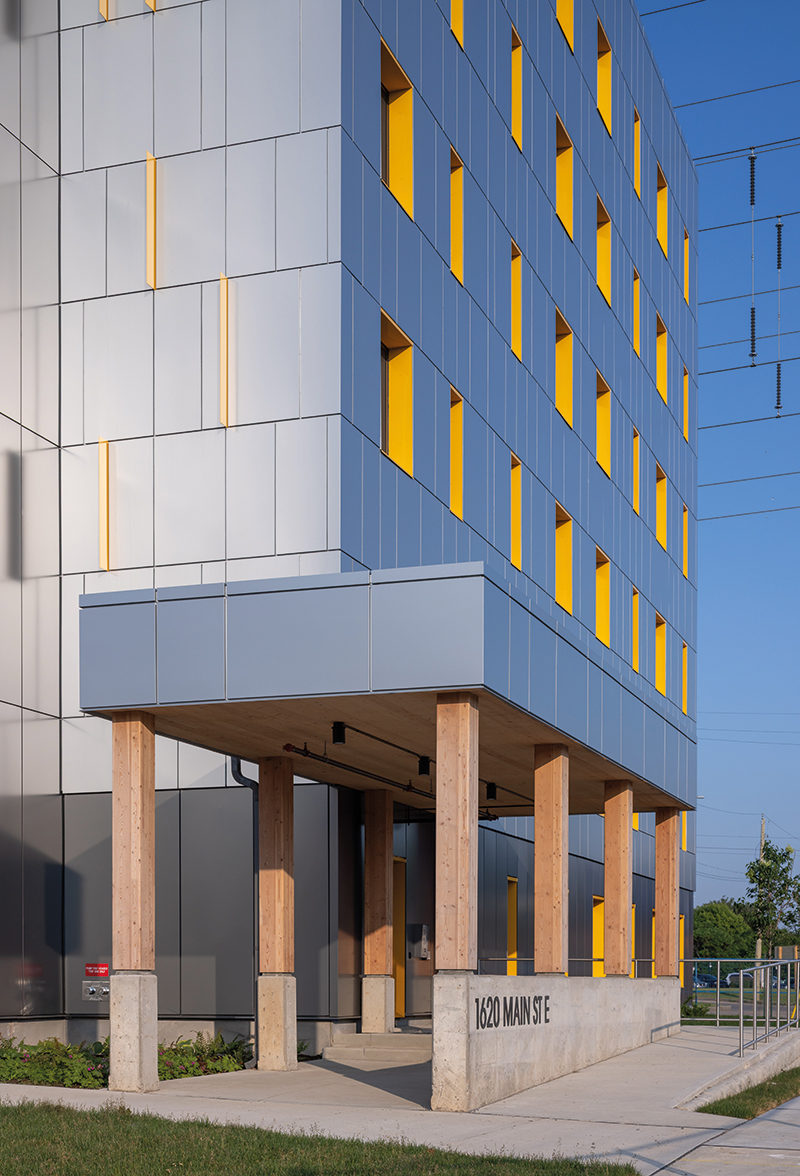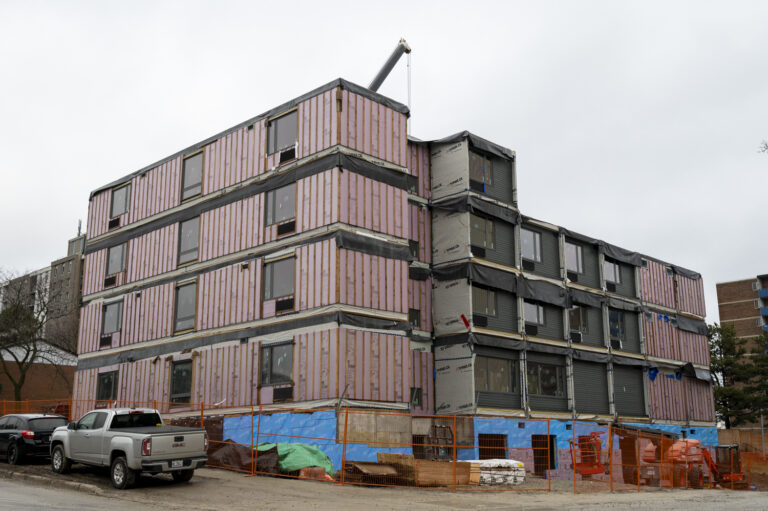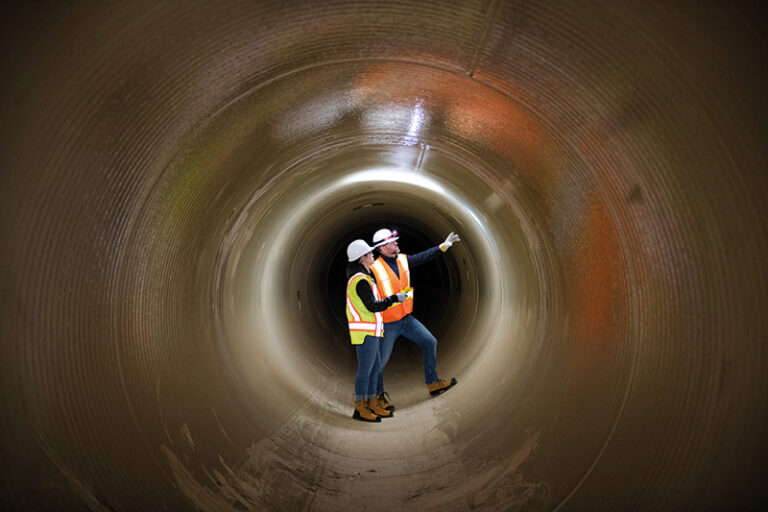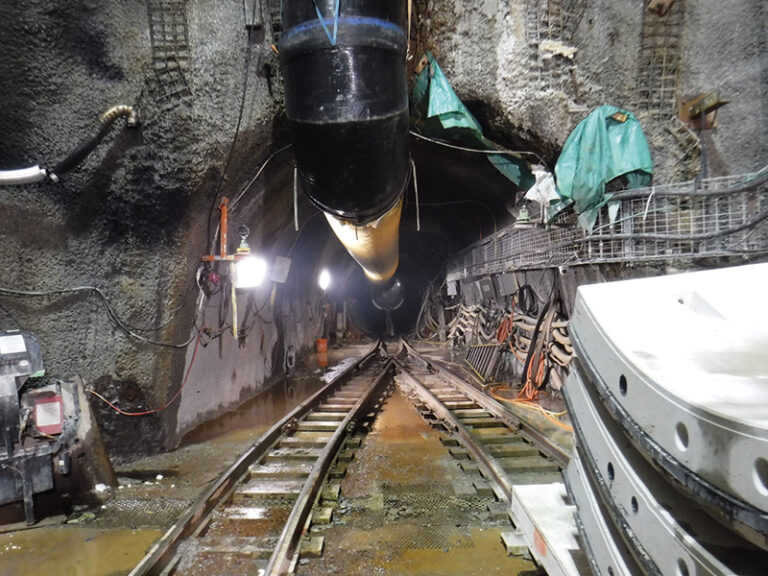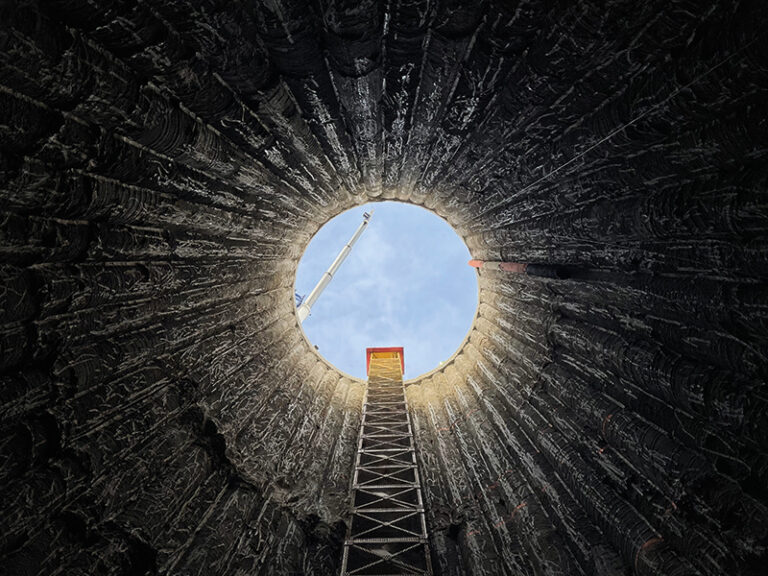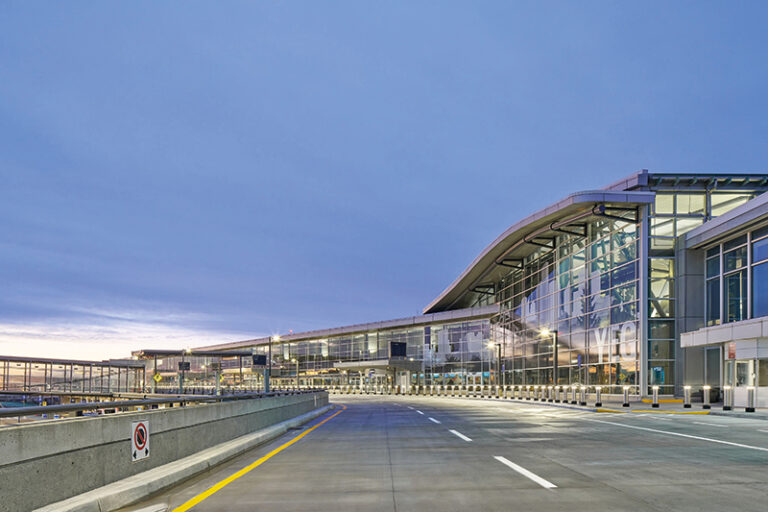1620 Main St. E. is a six-storey, 42-unit affordable housing development located in Hamilton’s east end. Completed in July 2025 by mcCallumSather in partnership with CityHousing Hamilton, it is the first affordable housing project in North America to combine Canadian-sourced mass timber construction with Passive House certification.
Designed and constructed through an integrated design-build model, the project offers a replicable approach to delivering high-performance housing quickly, efficiently, and with long-term value for residents and municipalities alike.
“Stability, dignity, and opportunity—that’s what safe, affordable, and sustainable housing makes possible. I’m so excited that families, seniors and individuals will now have that here,” said Hamilton Mayor Andrea Horwath. “This site was home to the City Motor Hotel, a building that had become a blight in the neighbourhood. The City’s foresight has led us to where we are today. This project is a sign of where Hamilton is headed: housing solutions that meet real community needs. These buildings show what’s possible when we work together to tackle the housing crisis with urgency, creativity and care.”
The $25 million 1620 Main Street East project received $7.9 million in funding from CityHousing Hamilton, $10.89 million in Rapid Housing Initiative funding from the federal government, and $6.3 million from the City of Hamilton.
Located in the heart of Hamilton’s east end, the building is one of the country’s most innovative examples of sustainable and rapid housing delivery offering not only deeply affordable units, but also a blueprint for municipalities across the country facing urgent housing pressures.
“This isn’t a pilot,” said Matt Bolen, director and architect at mcCallumSather. “It’s proof that affordable housing can be delivered quickly, responsibly, and with a high standard of livability. “We’ve been refining this model through years of work in Passive House and prefabrication. 1620 Main is the result of that process. It’s a practical solution, built with care and designed to scale.”
CityHousing Hamilton’s vision for the project was clear from the beginning: transform a neglected urban site into a healthy, inclusive, and sustainable residential community. Their goal was not only to provide much-needed affordable housing, but to do so in a way that demonstrated what is possible when performance, design, and delivery come together.
Working with mcCallumSather and builder Melloul-Blamey, along with key collaborators such as Element5, RDH, MTE, DEI Consulting Engineers, and OMC Landscape Architecture, the project team employed a modular, prefabricated design strategy that allowed for rapid assembly while maintaining exceptional quality.
The building was constructed using Cross-Laminated Timber panels fabricated by Ontario-based Element5, significantly reducing embodied carbon and supporting Canada’s forestry and manufacturing sectors. Passive House-certified windows, over-insulated and installed with Cascadia thermal clips, were carefully integrated to reduce thermal bridging and achieve long-term energy efficiency. A central ERV system paired with smart controls ensures excellent indoor air quality, while a rooftop solar array contributes to the building’s low operational energy use.
Morgan Wright, Associate and Architect at mcCallumSather, noted that the project was designed not only for performance, but for people. “We think about energy performance, of course. But we’re equally focused on how people experience the building—light, air, comfort, and the feel of the materials. That’s what makes it successful.”
“We wanted to create a building where residents feel comfort, dignity, and joy. We believe high-performance design should enhance daily life, and this building shows that even affordable housing can be beautiful and sustainable.”
In addition to its environmental and technical achievements, 1620 Main St. E. includes outdoor gathering spaces designed with drought-tolerant native plants, creating a welcoming and low-maintenance landscape that encourages community engagement.
The airtightness test, a critical measure of Passive House performance, came in at 0.12 ACH50—nearly three times tighter than the required standard. The building’s annual energy demand for heating and cooling remains well below 30 kWh/m²/yr, proving that ultra-low energy design is achievable even within the constraints of public-sector budgets.
Each unit in the building follows a repeatable modular layout, which helped streamline design, simplify detailing, and support prefabrication. Despite the efficiency of this system, the building doesn’t feel rigid or repetitive. Natural light reaches all suites, with every unit located within seven metres of an operable, triple-glazed window. Mechanical systems are fully electric and include high-efficiency VRF heat pumps for heating and cooling, supported by a central energy recovery ventilation (ERV) system with smart dampers.
The project has already garnered national attention, receiving a Third-Place award in the Sustainable Project of the Year (Built) category at the Rethinking the Future Awards. It stands as a replicable model that aligns with government funding incentives, decarbonization goals, and the need for fast, effective housing solutions.
“This project demonstrates that with the right team, locally sourced materials, and a collaborative delivery model, we can respond to Canada’s housing crisis with speed, quality, and care,” said Bolen. “We’re proud to share this model with other municipalities, and we’re ready to do it again.”
[This article appeared in the September/October 2025 issue of ReNew Canada.]
Featured image: The building at 1630 Main St. E. was constructed using Cross-laminated Timber panels fabricated by Ontario-based Element5, significantly reducing embodied carbon. (Adrian Ozimek)

